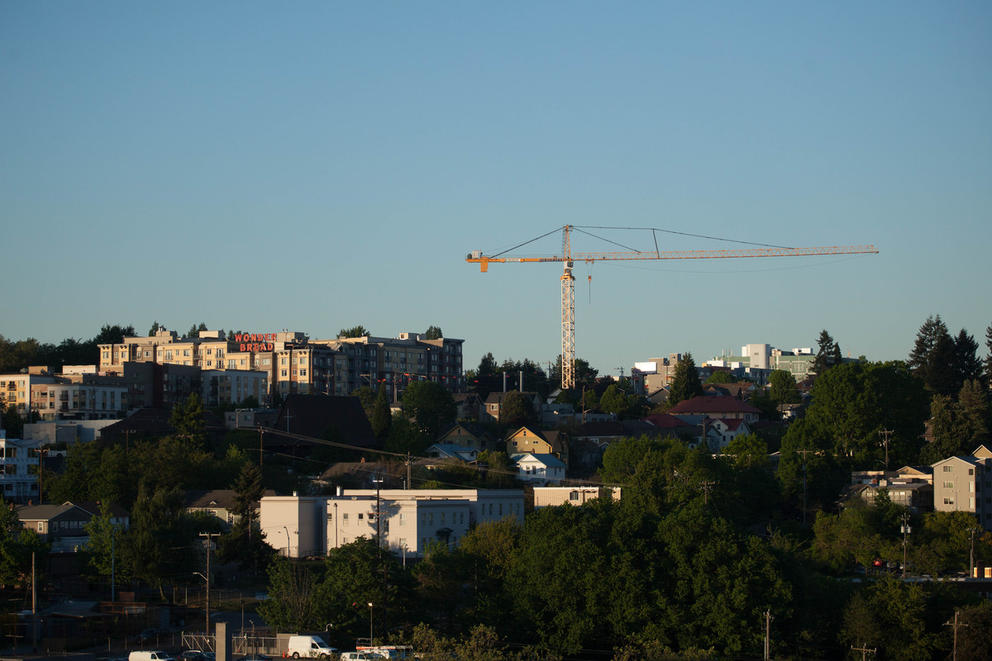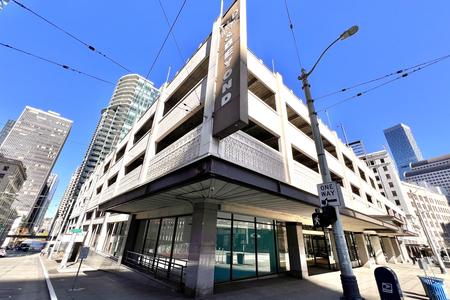Released Tuesday, the proposal dictates what kind of housing can be built, how much can be built and where it could go. It also would create a new neighborhood designation that allows more corner stores and restaurants to be built near housing, and implements the state’s new “missing middle” housing law to allow four to six homes on single-family home lots.
For the past 30 years, residential growth has been shaped by the city’s “urban village strategy.” It channeled the vast majority of new housing construction into urban centers such as Downtown and South Lake Union and along arterial streets in the core of urban villages like Wallingford and Fremont while limiting most of the rest of the city’s residential zones to single-family homes.
Seattle’s residential zoning has not been completely frozen in amber since the urban village strategy was adopted in 1994. The 2019 adoption of the Mandatory Housing Affordability program expanded the boundaries of urban villages and increased allowed density. That same year, the City Council passed a law allowing homeowners to build two accessory dwelling units on any single-family lot. In 2021, single-family zoning was rebranded as neighborhood residential zoning.
Still, a 2021 analysis found that concentrating growth into a small area while allowing only low-density housing construction in most neighborhoods perpetuated Seattle’s racial and socioeconomic inequities.
“We know that it is excessively costly to own a home or to be a first-time homebuyer and get in the door. We know that rent prices are much higher than they used to be, and in a lot of cases too high for our workforce to actually live in the city,” said Rico Quirindongo, director of the Seattle Office of Planning and Community Development, at a press briefing Monday.
He continued, “We know that our Urban Village strategy has served us up to this point in time, but that our new growth strategy has to look at how we provide diverse housing types and additional densification across the entirety of the city, not just our urban centers.”
The city’s new proposal is not a wholesale departure from the urban village strategy, but an evolution. The draft plan divides the city’s residential neighborhoods into four designations: Regional Center, Urban Center, Neighborhood Center and Urban Neighborhood. It also updates the Manufacturing and Industrial Center designation.
The comprehensive plan update still faces a long road before it can be implemented. The city must solicit public feedback, finalize the plan and do further impact analysis before it goes to the City Council for final approval.
Regional Centers
The city is rebranding Urban Centers as Regional Centers. These are Seattle’s densest neighborhoods, with apartment and condo towers, office high rises, hotels, retail and entertainment hubs.
The new plan keeps the six existing centers — Downtown, Uptown/Lower Queen Anne, South Lake Union, First Hill/Capitol Hill, University District and Northgate — and reclassifies Ballard as a Regional Center. The proposal would also expand the northern boundary of the Uptown Regional Center around the future light-rail station near Seattle Center.
Urban Centers
Urban Villages also get a rebrand under the new plan and will now be known as Urban Centers. These are the commercial and housing cores of Seattle’s neighborhoods, such as Wallingford, 23rd and Jackson in the Central District, Green Lake and North Beacon Hill.
The buildings are four to eight stories high typically, with some taller buildings next to light rail. There is also office space, restaurants and retail.
The updated growth plan creates a new Urban Center around the future 130th Street light-rail station area. It also expands the boundaries of the Greenwood, upper Queen Anne, Admiral Way and Morgan Junction Urban Centers. Future light-rail stations in West Seattle Junction and Othello would allow greater density in those Urban Centers as well.
Neighborhood Centers
The city’s growth strategy creates a new designation called Neighborhood Centers. These will be smaller-scale mixed-use zones with four- to six-story apartment and condo buildings with ground-floor shops, grocery stores and restaurants. The idea is to create more housing near amenities residents need regularly to reduce the need to get in a car every time you go out.
The plan proposes creating 24 Neighborhood Centers throughout the city with slightly greater density than exists today. Many of them would be located on the edges of existing Urban Centers. The boundaries will be drawn within 800 feet or one to three blocks from existing light-rail stations, major bus stops or commercial cores.
Urban Neighborhoods
Seattle’s primarily residential zones once again get a rebrand under the new plan. These areas of mostly single-family homes will now be designated Urban Neighborhoods.
Urban Neighborhoods will incorporate the changes required by 2023’s statewide missing-middle housing law. The state Legislature legalized two- to six-unit homes everywhere single-family homes are currently allowed. Seattle’s Urban Neighborhoods will allow four-unit projects on every lot, including stand-alone townhomes, row houses and cottage apartments. Lots within a quarter-mile of frequent transit can build up to six units. A developer can also build six units if two of the units are subsidized affordable housing.
Seattle long-range-planning manager, Michael Hubner, argued that it’s not as dramatic a change as it may appear since Seattle law already allows three units per single-family lot through accessory dwelling units. A key difference is that under the state missing-middle law, it is much easier to have separate ownership of each unit, helping bolster the supply of housing for sale.
In addition to more units, the Urban Neighborhood designation allows four- to six-story buildings along arterials near frequent transit. It also allows corner stores, restaurants and other small commercial entities to be mixed in with housing.
Manufacturing and Industrial Centers
Seattle already has Manufacturing and Industrial Center designations along the Duwamish River and Elliott Bay waterfront in the south end of the city and along Interbay and the Ship Canal up north. The new growth plan doesn’t modify those boundaries, but it incorporates changes made as part of last year’s Industrial and Maritime Strategy legislation. That package created new zones within the Manufacturing and Industrial Centers to protect heavy industry, allow for new light industry and technology manufacturing and allow some new housing where it was previously banned.
The politics of zoning changes
All combined, the proposed changes will result in a relatively modest increase in housing construction over the next 20 years. According to the city’s analysis, Seattle could expect to gain about 80,000 new units of housing in that time span under its current zoning. With the proposed changes, city planners expect the city will see at least 100,000 new units of housing over 20 years.
Before any changes can happen, however, OPCD has to do significant outreach. Between March 14 and May 2, the city is hosting an open house in each of the seven City Council districts as well as eight virtual open houses. They are also soliciting feedback through the city website.
Planners intend to incorporate that feedback into their plan this summer, then release a revised draft next fall.
Changing single-family zoning in Seattle has been politically toxic in the past. Former Mayor Ed Murray proposed allowing missing-middle density across all Seattle neighborhoods as part of his 2015 housing plan. But he ultimately scrapped the proposal in the face of fierce opposition from homeowners.
Quirindongo thinks Seattle residents’ views on the issue have evolved over the past decade as the housing crisis has worsened.
“As people continue to move into the city and try to find a place to rent or a place to buy, it is really hard to do,” said Quirindongo. “So what is coming out of that is that the typical city resident in this town is interested in having more housing choices. … This plan is really trying to answer for the need that people are saying we need to provide for.”



